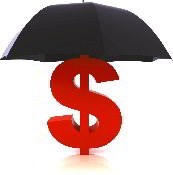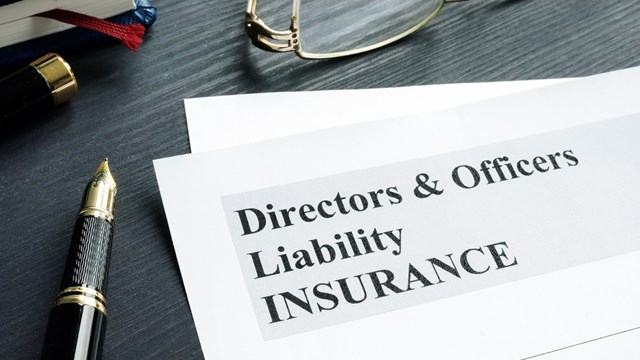
The economic crisis has affected many individuals, businesses and markets—the real estate and job markets, to name just two particularly nasty examples. Until now, one of the few industries that didn’t seem as deeply impacted was the insurance industry, but that is soon to change, according to certain experts in the field, who say that indicators show that insurance premiums are most likely set to rise over the next year.
Soft vs. Hard Market
According to Paul E. Felsen, president of Felsen Insurance Services, Inc. in Denville, New Jersey, “Premiums will probably or, I should say, they should go up in the next 12 months because the insurance companies continue to lose money.”
To understand why this is likely, you have to understand what the insurance industry calls its “soft” and “hard” markets, and you have to look back over the last decade and take into consideration the serious events that have befallen the industry. The insurance industry works in cycles. When it’s a soft market in the industry, insurance companies make money and the premiums paid by policyholders can reach record lows. A soft market also means more competition among insurers, which drives prices further down for policyholders.
By contrast, in a hard market it’s the opposite scenario: insurance companies aren’t making money. They are paying out more for more claims, and their own investment portfolios take big hits if the stock market takes a plunge. As a result, insurance premiums rise.
“The strange thing,” says Felsen, “is that most people thought that insurance pricing will start to firm up or go up in 2009, and so far in the first half of the year that has not been the case. I wouldn’t say the market is soft, but we’re not seeing dramatic increases just yet.”
According to Alan R. Geisenheimer, president of the Fair Lawn-based Geisenheimer Agency, “Insurance companies make their money from premiums and investments. Traditionally, with the exception of a handful, insurance companies without investment income are not profitable. The investment income makes them profitable. Their expenses will continue at least at the same level, but investment income is down dramatically, and in these difficult economic times claims will actually rise. As such, if they have a solid financial base, they can handle a year or two of diminished income and decreasing premiums, but they soon face the issue of raising premiums or going out of business,” said Geisenheimer.
“The diminished returns on the part of the insurance carriers, and by that I mean, simply, that losses and expenses exceed revenue,” added Felsen. “That’s really called their combined ratio and as combined ratios increase and insurance companies lose money they have not alternative but to increase pricing. Also a lot of it is controlled by the reinsurance companies. Reinsurance is where insurance companies go to insure they’re own losses. So when reinsurance prices go up the primary carrier has to pass it along to the consumer.”
More than the Recession
September 11th and the recession are just two major factors that have conspired to drive insurance prices up. Mother Nature has played a role as well—with weather events that affected markets all across the country, even thousands of miles away from the actual disaster sites. 2005 was the most active hurricane season on record, with Hurricanes Katrina and Emily just two of the many storms that reached land and caused a total of $100 billion in damages. In August 2008, Hurricanes Gustav and Ike pounded the United States mainland once again, leaving behind billions of dollars in damages. Obviously, the thousands of people whose lives were uprooted and forever changed by the storms bore the brunt of the impact, but their insurance companies were hit hard as well.
“After last year, the insurance industry took a bath from Hurricanes Gustav and Ike in Florida, for a combined ratio of 105,” explains Vincent Hager, president of JGS Insurance in Holmdel, New Jersey. “That means that for every dollar the insurance company took in, they paid out five dollars in claims.”
Another factor in the increasing insurance costs was the increasing price of building materials. Although the costs of construction materials are now on the decline—according to the U.S. Bureau of Labor Statistics, they’re down 3.7 percent from year-earlier levels—what happened a few years ago continues to affect the industry.
Higher Replacement Costs
“The cost to build something today is going to be higher than what it was five years ago or three year ago,” says Felsen. “In addition, all policies obligate you to insure your property for 100 percent of replacement costs. So if it cost more to rebuild something, then you have to insure for a greater amount, and that creates a higher premium.”
When the costs of wood and other materials necessary to rebuild a totaled structure are higher, the insurance company is forced to pay out more on that claim.
According to one insurance professional, it’s also worth mentioning that historically, insurance claims do go up in a recession. “Maybe someone tripped on your property, and they wouldn’t have thought about putting the claim in once before,” he says. “But they just got laid off three weeks ago—so they might put that claim in now.”
“An [association] might have other pressures,” he continues. “If their residents are getting laid off from their jobs, they may not be able to afford their maintenance fees, so the HOA may be struggling to pay its operating expenses or struggling to do repairs—and that may lead to more claims.”
Vacancy rates have also affected building insurance rates. Typically, the rates paid by a building or development with higher vacancies are higher than those paid by one with fewer vacant units. This is because vacant apartments are susceptible to vandalism, theft and damage.
“Also because people are losing jobs, you need to be more wary of fraudulent claims and make sure it’s on the up-and-up,” says Hager. “Be diligent in making sure that everything is being run properly because we’re starting to see our money claims on the rise.”
Acceptance and Rejection
As insurance rates increase and the markets tighten, it becomes difficult for buildings and HOAs to acquire reasonably-priced insurance, explains Felsen.
“It’s difficult because there are fewer carriers that are playing and there are fewer people in the arena. So if there are fewer people in the arena, the prices are higher because there is less competition, so as competition decreases, premiums go up. Insurance carriers can basically charge whatever they want if they know they are the only game in town. In New Jersey, there are really only a handful of insurance carriers that are interested in condominium and co-op communities. It is not like there are 20 carriers that are writing for this class of business. It’s really like under ten.”
Too many claims on your association, and you run the risk of losing your insurance coverage entirely—though industry professionals say this is rare.
“People will be less likely to forgo a claim, and are more likely to try to maximize the claim without regard to the legal issue and where no claim exists, (i.e. slip and fall), actually create one due to their own economic problems,” says Geisenheimer.
However as the number of insurance carriers continues to shrink, developments may be compelled to accept less than desirable alternatives.
“As the market gets harder, fewer companies are available than when the market was soft,” says Felsen. “You’ll be charged higher premiums, but even the worst building won’t be left without insurance. There will always be some company, somewhere, who will write something—but at what cost? The worst case scenario is that you may get quotes with companies, which aren’t licensed to write policies in your state. The premiums are much higher, and the coverage isn’t as good. If there are any complaints, you can’t file them with [your state’s] State Insurance Department.”
Reducing Insurance Costs
With insurance premiums bound to increase over the next year, now is the time for buildings and HOAs to focus their attention toward risk management efforts to stabilize their insurance expenses.
“Risk management is correcting errors or correcting inadequacies and problems in their communities before making the claim,” says Felsen. “That means walking the property with their broker, agent or insurance company and looking for trip and fall hazards, going through the dryer vent for a safety check, making sure that the roofs are in good order so that you don’t have leaks and ice damming claims during the winter or rainy season.
It’s wise to address it beforehand, says Felsen, because the less claims you have the better your loss experience, and the more desirable you’re going to be to an insurance company. “Everybody has insurance and you’ll find insurance somewhere, but the question is, or the problem is, what you’re going to pay for it.”
The professionals agree that the first step to avoiding the latter two scenarios is to reduce the number of claims against your association. Keeping current with maintenance, making necessary repairs in a timely manner and addressing any violations immediately can all help avoid the types of accidents and mishaps that lead to claims—and higher premiums.
“Look at your association from a neutral eye,” says Geisenheimer. “Where are the risks? Do they have certificates of insurance from all vendors with additional insured wording, although that may not be as good as one would think,” he says.
Other important steps, he says, are “clear warning signs at the pool, the overhead clearance height for the canopy or garage, good working lobby communication equipment so that no one gets in without being properly admitted, and well-informed lobby employees regarding rules about who gets in and who doesn’t.”
And, “one of the major sources of losses is the trip and fall from the elevator car. Make sure the service contract calls for [the contractor] to constantly monitor the self-leveling equipment to eliminate that exposure. Closed circuit TV is a positive tool to prevent crime in and out of the building. Of course, the sanding and resanding of the walks and driveways in winter,” is crucial, Geisenheimer adds.
He also advises associations to resist the urge to switch carriers as the market transitions. Presenting your association as having no problems at all when you know better is also one of the biggest mistakes you can make when shopping for coverage—fibbing now can mean getting dumped by your insurer later and finding yourself ultimately uninsurable.
“The trick is to try to stay with the same company through thick and thin,” says Geisenheimer. “If the company is active in loss control, happens to be a major writer of association business and is well-rated, the association is well-served to try to maintain that relationship. It will pay off when the hard market comes back and it will come back. It always does. The agent is another key. Does the agent know the association business, insure more than a few associations, actually reads and knows your prospectus compared to other associations, gets involved in helping the board communicate to the unit owners about having their own insurance and other risks and suggestions, then he is the one to keep as well.”
Nobody knows exactly when the insurance premium increases will begin, but it’s best to be aware of the situation now and review your policy, so you know what to expect when the time comes for renewal.
Lisa Iannucci is a freelance writer and a frequent contributor to The Cooperator. Melissa Swinea provided additional research for this artile.






Leave a Comment